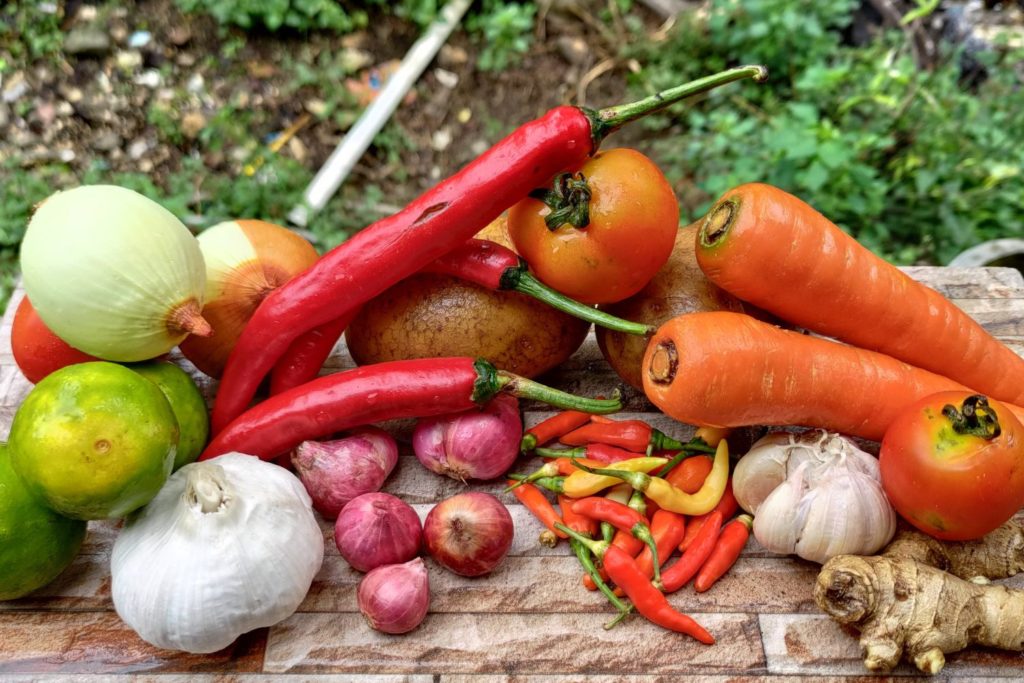This post contains affiliate links, meaning, at no additional cost to you, if you click through and make a purchase, I may receive a commission. I only share items that I truly love and use myself. For more information please see my disclosures here.
Be sure to listen to the
She’s Got It Together Podcast!
Are you tired of eating the same old meals week after week? Do you want to save money on groceries while enjoying the freshest, most flavorful ingredients? If so, seasonal meal planning is your new best friend. By using seasonal produce, you can create delicious and cost-efficient meals that celebrate the best flavors each season has to offer. Let’s dive into some fantastic tips for making the most of seasonal meal planning!
Why Seasonal Meal Planning is a Game-Changer
First things first, why should you consider seasonal meal planning? Here are a few fantastic reasons:
- Freshness and Flavor: Seasonal produce is picked at its peak, ensuring maximum flavor and nutrition.
- Cost-Efficiency: Seasonal fruits and veggies are often cheaper due to lower transportation and storage costs.
- Environmental Benefits: Eating seasonally reduces your carbon footprint by supporting local agriculture and reducing food miles.
- Variety: Enjoy a diverse range of fruits and vegetables throughout the year, keeping your meals exciting and varied.
Step 1: Understand What’s in Season
The first step to seasonal meal planning is knowing what produce is in season. Here’s a quick guide to get you started:
Spring:
- Asparagus
- Strawberries
- Peas
- Radishes
- Spinach
Summer:
- Tomatoes
- Zucchini
- Berries (blueberries, raspberries)
- Corn
- Cucumbers
Fall:
- Apples
- Pumpkins
- Squash
- Sweet Potatoes
- Brussels Sprouts
Winter:
- Citrus Fruits (oranges, grapefruits)
- Kale
- Carrots
- Leeks
- Winter Squash
For a more comprehensive list, you can check out resources like SeasonalFoodGuide.org.
Step 2: Plan Your Meals Around Seasonal Produce
Once you know what’s in season, you can start planning your meals. Here are some tips:
- Mix and Match: Combine seasonal produce with pantry staples and proteins to create balanced meals.
- Batch Cooking: Make large batches of soups, stews, and casseroles that can be frozen and enjoyed later.
- Variety: Incorporate a variety of fruits and vegetables to keep your meals interesting and nutritious.

Sample Seasonal Menu
To get you started, here’s a sample seasonal menu that includes breakfast, lunch, dinner, and snacks for a day:
Spring Menu:
Breakfast: Asparagus and Goat Cheese Omelet
- 2 eggs
- 1/2 cup chopped asparagus
- 2 tbsp crumbled goat cheese
- Salt and pepper to taste
Lunch: Strawberry Spinach Salad
- 2 cups fresh spinach
- 1 cup sliced strawberries
- 1/4 cup sliced almonds
- 1/4 cup crumbled feta cheese
- Dressing: balsamic vinegar, olive oil, salt, and pepper
Snack: Fresh Peas and Hummus
- 1 cup fresh peas
- 1/4 cup hummus
Dinner: Lemon Garlic Chicken with Spring Veggies
- 1 chicken breast
- 1 lemon, juiced
- 2 cloves garlic, minced
- 1 cup mixed spring veggies (radishes, carrots, peas)
- 1 tbsp olive oil
- Salt and pepper to taste
Step 3: Create Your Grocery List
Once your meals are planned, create a grocery list. Organize it by sections (produce, dairy, pantry items, etc.) to make shopping more efficient. This way, you’ll ensure you’re only buying what you need and minimizing waste.
Step 4: Shop Local
To make the most of seasonal meal planning, try to shop at local farmers’ markets or join a community-supported agriculture (CSA) program. This way, you’ll get the freshest produce while supporting local farmers. Plus, it’s a great way to discover new and interesting fruits and vegetables you might not find at the grocery store.
Step 5: Prep Ahead
Meal prepping can save you tons of time during the week. Here are some ideas:
- Chop Veggies: Pre-chop veggies for salads, stir-fries, or snacks.
- Cook Grains and Proteins: Cook a big batch of quinoa, brown rice, or chicken breasts.
- Batch Cooking: Make large batches of soups, stews, or casseroles to freeze.
Tips for Successful Seasonal Meal Planning
- Keep It Simple: Focus on recipes with minimal ingredients and steps.
- Be Realistic: Plan meals you know you’ll have time to cook.
- Use Leftovers: Plan for leftovers to save time and reduce waste.
- Get Creative: Try new recipes and experiment with different seasonal produce.
Common Challenges and Solutions
Challenge 1: Limited Availability
- Solution: If certain seasonal produce isn’t available, look for frozen options or substitute with similar fruits and vegetables.
Challenge 2: Time Constraints
- Solution: Use batch cooking and meal prep to save time during the week. Opt for quick and easy recipes on busy nights.
Challenge 3: Budget
- Solution: Plan meals around seasonal produce that’s on sale. Buy in bulk and freeze extras for later use.
Helpful Resources
Here are some fantastic websites to help you on your seasonal meal planning journey:
- SeasonalFoodGuide.org: Find out what’s in season near you.
- EatingWell.com: Seasonal recipes and meal planning tips.
- TheKitchn.com: Tips and recipes for seasonal eating.
- LoveAndLemons.com: Seasonal, plant-based recipes.
- FarmersMarketCoalition.org: Find local farmers’ markets and CSAs.
Seasonal meal planning doesn’t have to be complicated or time-consuming. With a little bit of planning and some smart strategies, you can enjoy nutritious, balanced meals that celebrate the best of each season. Remember, the key is to keep things simple, use versatile ingredients, and make the most of your time.


